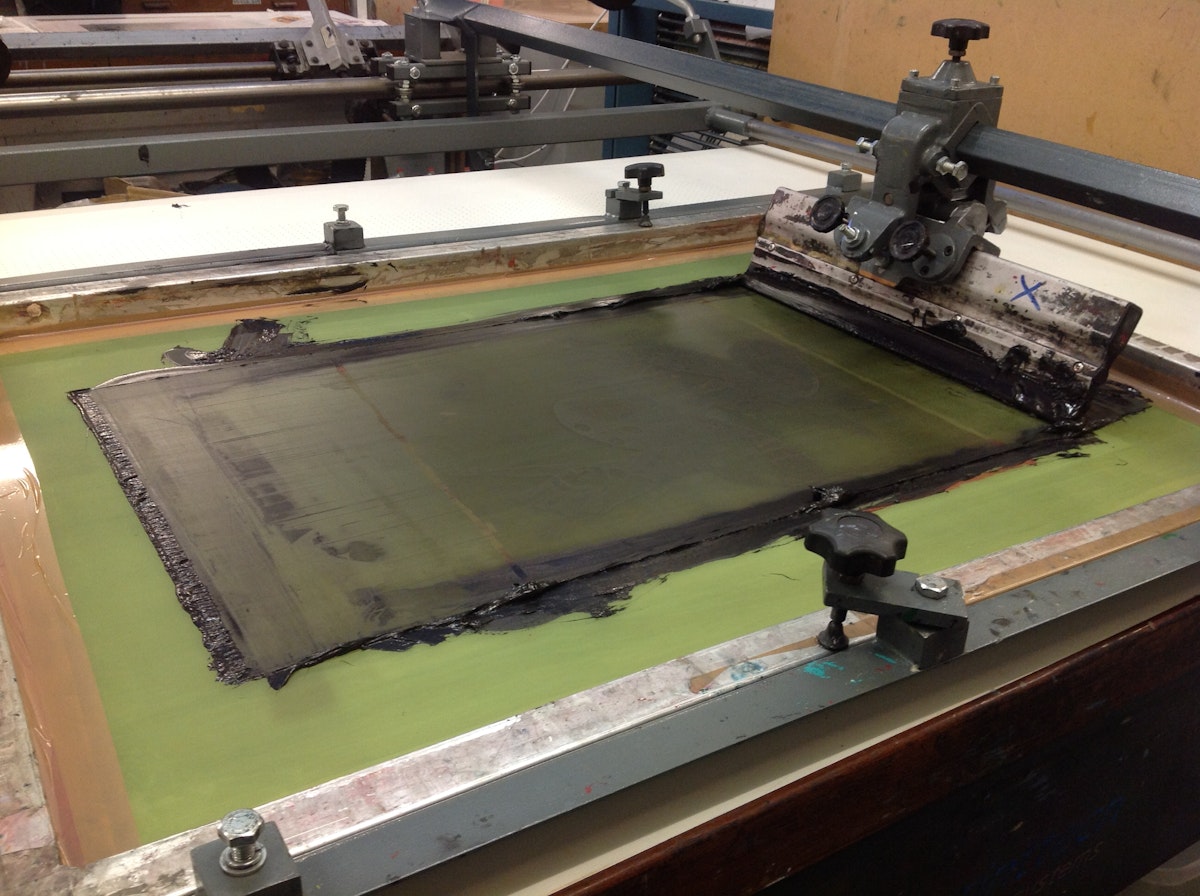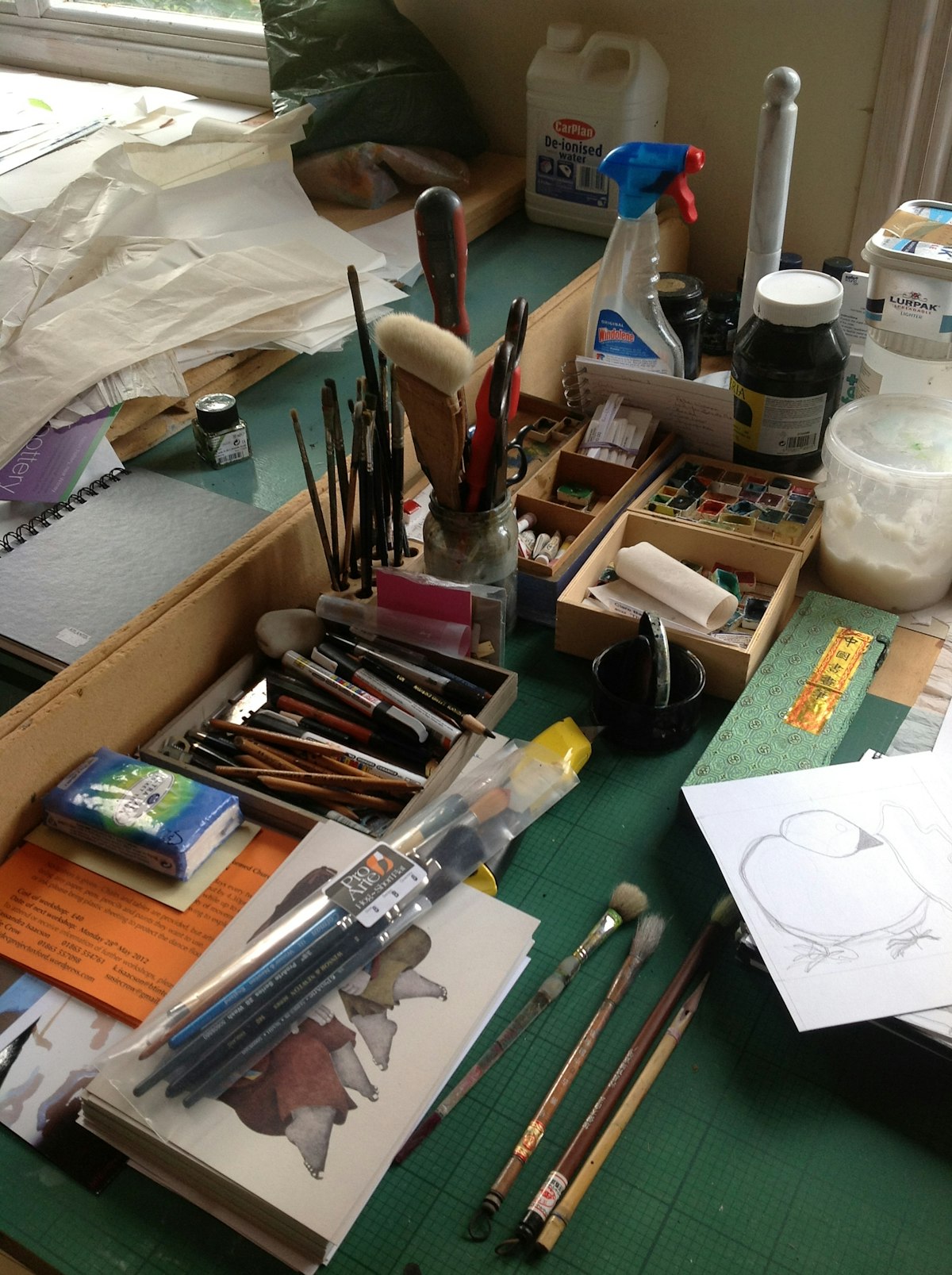Creating a print

Lithography
Lithography is a magical form of printing. The picture is drawn onto a flat piece of limestone. Chemicals are applied to the drawing causing a reaction to take place between the calcium in the limestone and the grease in the lithographic pencil. This means you can wipe away the original drawing, but bring it back by rolling the stone up in a printing ink. The inked stone goes through the printing press and the image is transferred, in reverse, to the paper.
The grain of the stone is inherent in my drawing. Its surface allows me to produce a fine textured, very tonal mark, unique to this process.
I print off editions of 20 and then hand-colour each print individually, as you might tint a photograph.
Screenprinting
A screenprint Is created by pushing printing ink through a fine mesh where areas have been blocked by a resin, preventing the ink from marking the paper, except where you want the image. My initial drawing goes onto a sheet of grainy acetate, which is then placed on a screen and placed in an exposure unit. When exposed the drawn image is transferred to the meshed screen. The texture on the acetate, which is picked up in the drawing is carried through to the printed piece. Each picture is hand-coloured once the ink is dry.


